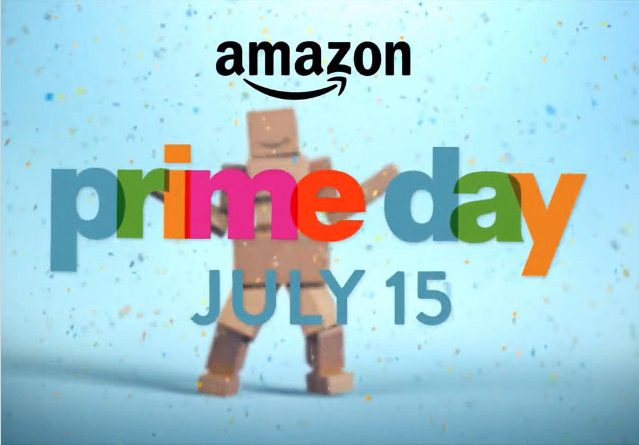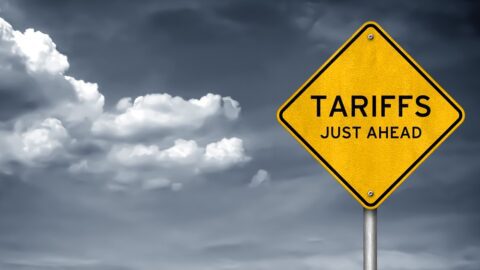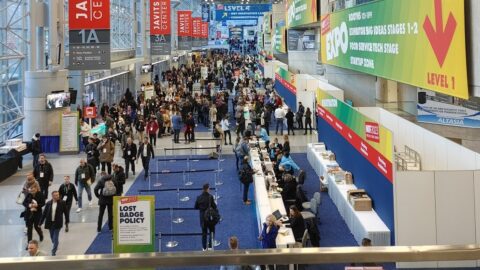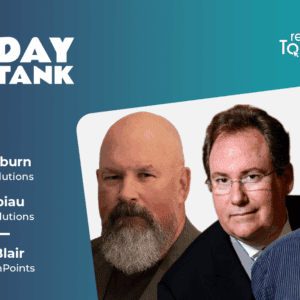The marketing mayhem surrounding Prime Day has settled, and now industry players are wondering whether it was a success.
The answer is: It really depends on who you ask.
While Amazon reported that Prime Day broke global sales records and exceeded Black Friday sales, many consumers would respond with an eye roll and snarky comment.
In a release this morning, Amazon revealed that worldwide order growth during Prime Day increased 266% over the same day last year, and 18% more than Black Friday 2014. Overall, Prime members ordered 34.4 million items across all Prime-eligible countries.
“Going into this, we weren’t sure whether Prime Day would be a one-time thing or if it would become an annual event,” said Greg Greeley, VP of Amazon Prime. “After yesterday’s results, we’ll definitely be doing this again.”
This especially is good news for businesses that use Fulfillment By Amazon, which makes their products available through the online marketplace. During the shopping holiday, year-over-year unit sales for these businesses increased by 300%.
RTP Editors Share Their Thoughts On Prime Day
Earlier this month, Amazon announced that it would be celebrating its 20th birthday by offering Prime members access to exclusive sales and deals that would beat out Black Friday. Although it offered few details, the online giant promoted the new event across all channels and promised its loyal members an unforgettable sales event. This frequent, cross-channel promotion undoubtedly helped generate buzz among the media and consumers alike.
As a result, the RTP editorial staff expected Prime Day to be a raging success. In the weekly Editor Q&A column, all team members predicted that both Amazon and its customers would be satisfied. Below, some editors share their perspectives on how the day went:
- Debbie Hauss, Editor-in-Chief: The amount of media attention that Prime Day received boosted the hype around the event but also raised expectations. I admit, I played the game and made a few purchases. Overall, the site was slow at times and I wasn’t blown away by the offers I saw. On the flipside of this event, I did not feel compelled to shop at Walmart because of their counter promotion. I think, as a one-time strategy, Prime Day drew attention to Amazon Prime and probably delivered a relevant number of new subscribers. But I’m not sure shoppers will expect much out of an annual Prime Day moving forward.
- Alicia Fiorletta, Senior Editor: I have to say, after checking out the Prime Day specials, I was not truly compelled to shop. I personally had more fun tracking Twitter and seeing all of the feedback from customers. However, I do feel the need to share a positive experience my fiancé had: For a short time, the Amazon Echo device was available at a discount for Prime Day. However, he already purchased the device at full price. He sent an email asking for the sale price and they were quick to respond and apply the discount to our account.
- Rob Fee, Managing Editor: It’s easy to make fun of Amazon offering an amazing deal on chef’s hats, but judging by the amount of sold out deals throughout the day, it’s hard to argue against Prime Day’s success. That said, the event certainly had its hiccups. I think Amazon missed an opportunity to tie some deals to a customer’s wish list, which could have avoided much of the disappointment voiced over social media. I thought the event’s biggest problem was that it was simply inconvenient. Consider this: Once a customer claimed a lightning deal, they had to complete the purchase within 15 minutes. If a shopper claimed five deals throughout the 24-hour event, they might have had to check out five times. What’s worse, they could also receive a separate shipment for each order. This seems awfully inefficient to me, and I can only imagine what package deliverers must think.
- Glenn Taylor, Associate Editor: I think it really all depends on what Amazon was going for. Did they just want the publicity of the day going in? While the outside is making jokes at the event’s expense, I’d like to see what the actual numbers are when it comes to subscription rates in the coming months. With year-over-year sales boosted 266% for the day in the U.S., one could say it was at the very least, a short term win. The selection was obviously poor, but Amazon could use this as a learning experience for future events, whether or not they decide to hold a Prime Day again.
Exceeding The Competition
Key competitors like Walmart tried to keep pace with Prime Day by implementing copycat sale events. But while Amazon’s event was only open to Prime members, Walmart’s discount extravaganza was available to all consumers, and shaved 20% to 50% off prices of thousands of items.
Despite Walmart’s event being open to more consumers, Amazon’s approach has more potential to impact its long-term revenue. Consumers who were interested in joining Prime for the sale were able to sign up for a free 30-day trial. This led to more new members worldwide trying Prime than any single day in the company’s history, according to a statement from Amazon.
Amazon can “still come out significantly ahead through the immediate revenue, up-front cash collection and ultimately lifetime value of the added Prime signups,” said Alex Rink, CEO of 360pi. “Especially telling, my gut reaction when I heard about Prime Day was ‘Hmm, maybe it’s time that I finally sign up for that Prime membership.’ My gut reaction when I saw Walmart’s promise of rollbacks? ‘Why, when they are known as the standard-bearer of everyday low price, were they not already proactively passing those savings on to shoppers?”
Prime Day also helped Amazon show its commitment to providing additional value to its most loyal consumer base, according to Shmuli Goldberg, Director of Marketing at Feedvisor.com. These consumers “are willing to pay the additional price for an unsurpassed customer experience, and have shown an incredibly strong brand dedication.”
Looking at the numbers, it is easy to say Prime Day was a success. However, there was an evident gap between customers’ expectations and what Amazon delivered, especially in terms of deal variety and inventory assortment.
Goodbye Big-Screen TVs, Hello Dishwasher Detergent
When thinking of Black Friday sales, big-screen TVs, Kindle Fires, gaming systems and other high-end electronics come to mind. Consumers also think of steep discounts that are nearly impossible to resist.
“Prime users were extremely positive on social media in the days building up to Prime Day,” said Meyar Sheik, Co-Founder and CEO of Certona. “As the day progressed, however, that excitement turned into frustration.”
Sentiment quickly turned sour because best-selling items on Amazon were tablets, digital cameras, laptops, movies/TV shows and video games, according to Market Track research. However, only 9.6% of these best-selling items were discounted by more than 10%. Instead, Amazon put steep discounts on more obscure items, such as dishwasher detergent pods and Pop Tarts.
“Most reports about the consumer reactions indicated disappointed rather than excited, satisfied shoppers,” said Ed Stevens, CEO of Shopatron. “This really all comes back to Prime Day being indicative of an inauthentic, manufactured shopping day, similar to a car dealership having a Labor Day blowout sale.”
In lieu of these off-the-cuff discounting strategies, some industry experts said Prime Day was a dud.
“Looking at Prime Day from the shopper’s perspective, it seems Amazon was basically selling a bunch of old inventory stock that’s been piling in their warehouse,” said Kurt Heinemann, CMO of Reflektion. Consumers also didn’t see Amazon’s trademark personalization elements, which means they were served irrelevant recommendations and even saw sold-out products. “This day was a lost sales opportunity for Amazon to capitalize on the extra traffic by cross-selling and intelligently promoting products that were not on sale.”
Needless to say, many consumers agreed with this perspective. Retail TouchPoints gathered Twitter hashtag usage through Topsy to identify overall buzz surrounding Prime Day. Although Twitter users mentioned the hashtag #PrimeDay nearly 69,000 times, the more negative hashtag #PrimeDayFail garnered more than 13,000 mentions.
“Since much of the hype was around Black Friday-like deals, shoppers were expecting the same type of items to be featured, and have taken to social media to express disappointment around lack of inventory and selection,” said Traci Gregorski, VP, Marketing at Market Track. “One of the big takeaways for all retailers is that if you build up hype around an event, it’s important to clearly communicate what the sale is and what types of items will be featured. It’s also important to offer compelling items to drive action.”
It also is imperative that retailers not only have the product selection, but also can keep pace with spikes in web traffic, among other factors.
“There are many challenges that could occur within a 24-hour sales event, which we’ve seen during Black Friday and Cyber Monday,” Sheik said. “Out-of-stock merchandise, slow Web traffic, competing retailers and a negative shopping experience might come up during an event like this, and we saw many consumers unhappy with Prime Day due to these reasons.”














